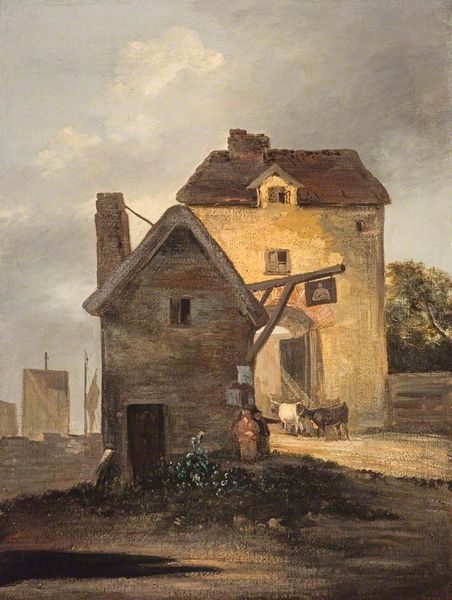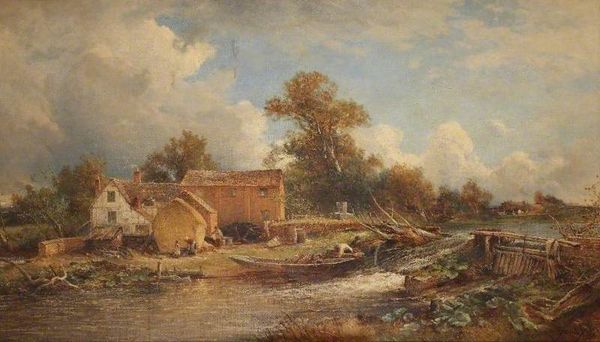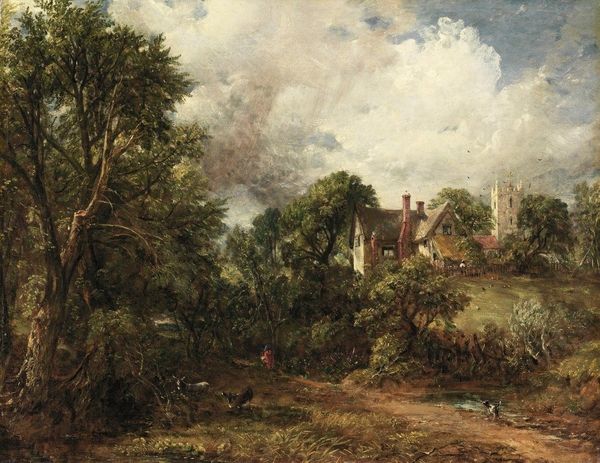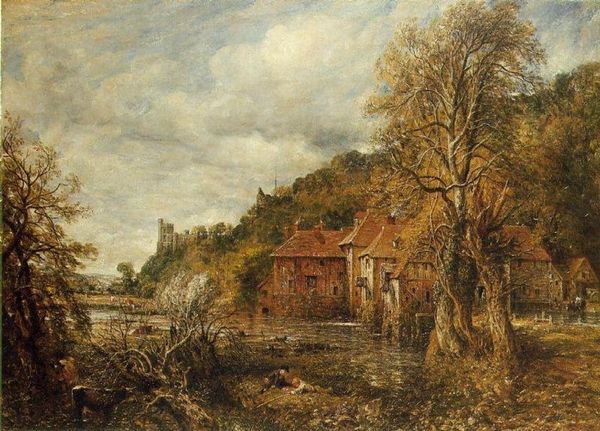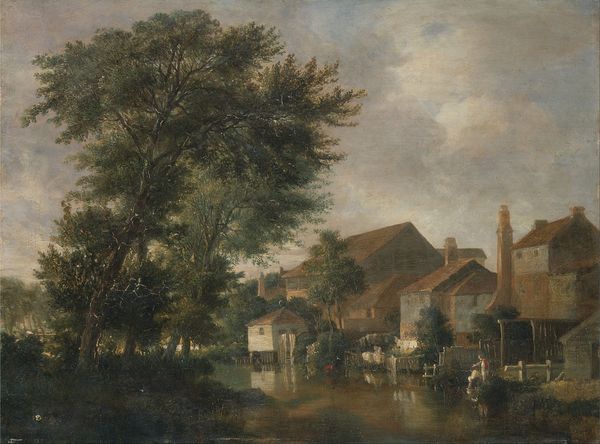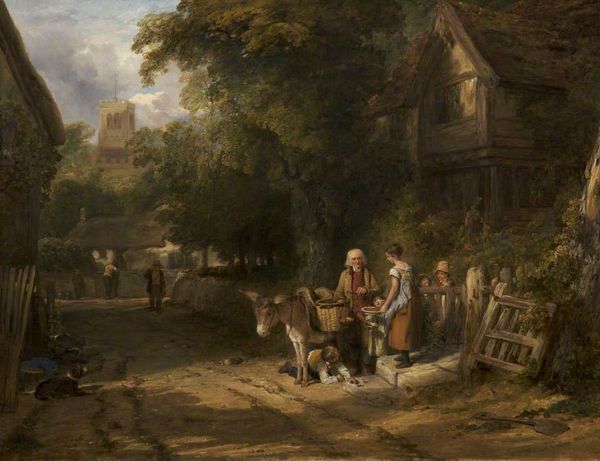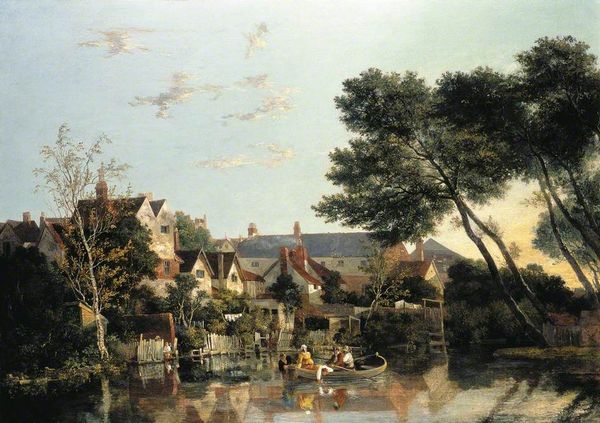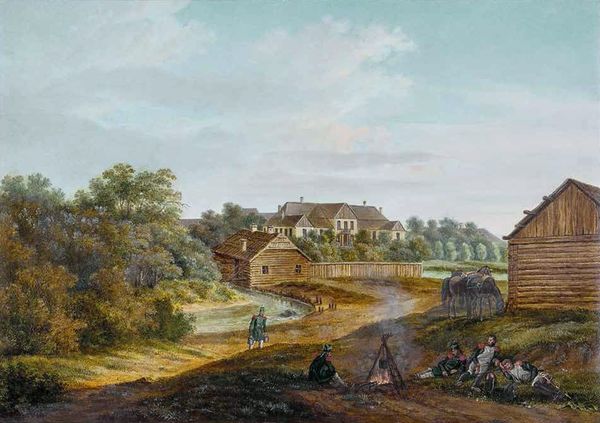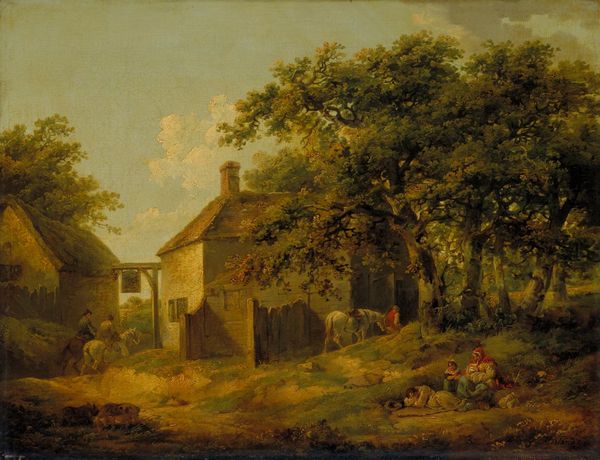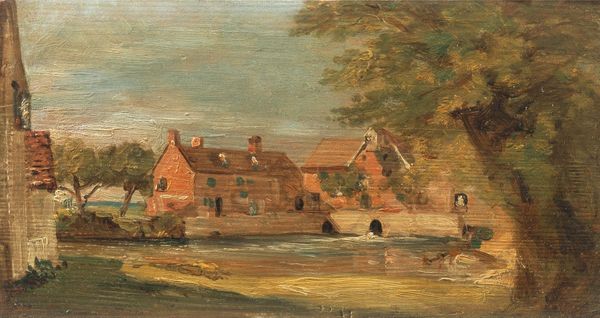
painting, oil-paint
#
painting
#
oil-paint
#
landscape
#
oil painting
#
romanticism
#
genre-painting
Copyright: Public domain
Editor: So, this is “Riverside Cottage,” an oil painting by John Crome. It's undated, but it just breathes the atmosphere of a bygone era. The light feels very soft, almost melancholic. What strikes me is the quiet domesticity – laundry hanging, figures in a boat – alongside this looming sky. What do you see in this piece? Curator: I see a narrative about land and labor masked by a picturesque scene. The "cottage" wasn't simply a home; it likely represents the exploitation of rural workers whose lives were intrinsically linked to the land. Think about the Enclosure Acts and the ways common lands were privatized, forcing many into wage labor. Editor: That's fascinating! The figures in the boat, then… they aren't just enjoying a leisurely day? Curator: Perhaps not. We need to ask ourselves: who owned the boats? Who controlled the river's access? These genre paintings often romanticize rural life, but they simultaneously conceal power dynamics at play. How does Crome visually reinforce this ideal of rural England, and for whose benefit? Editor: The composition feels very deliberate now that you point it out. The cottage is central, but somewhat obscured. And the light emphasizes the sky, almost dwarfing the human activity. Is that playing into the power dynamic somehow? Curator: Exactly! The imposing sky reminds us of nature’s power, and maybe, indirectly, the power structures controlling the land. Also, who were the consumers of these paintings? Largely, the emerging middle class, keen on idealizing and perhaps obscuring the realities of the working class. It’s interesting to consider who gets to represent the “real” England, and who gets excluded from that vision. Editor: This has totally shifted my perspective! I thought it was just a pretty landscape, but now I see so much more – questions about land ownership, class, and who controls the narrative. Curator: Precisely! It's about digging beneath the surface, understanding the artwork within its socio-political context. That's where art history truly becomes meaningful.
Comments
No comments
Be the first to comment and join the conversation on the ultimate creative platform.
